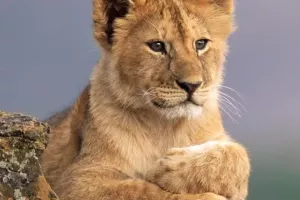This year marks the 11th World Elephant Day. Last spring, a group of elephants in Xishuangbanna swam northward, drawing worldwide attention.
As the largest land mammal, there are many articles, books, and documentaries about the elephant, but it remains one of the most misunderstood animals. How to read the little movements of elephants?
What are the emotions and emotions of elephants that share more than 90% of their genome with humans? How can humans coexist with them?
THE LAST ELEPHANTS provides an opportunity to learn more about elephants. This is a collection-level African elephant science book.
The book presents the story of African elephants' lives and survival from the views of more than 40 researchers, animal conservationists, forest rangers, and others. The book not only depicts the charming and clever side of elephants, but it also reveals the terrible death of elephants, ivory poaching, and the unwavering efforts of people on the African continent to ensure elephant survival and well-being.
By reading this book, we will learn more about elephants, why they are important, and the plight they are in, which will allow us to better care for them and live in harmony with this extraordinary group of creatures.
Forest elephants account for one-quarter to one-third of African elephants, which are currently estimated to number around 100,000. Forest elephants are highly social and form close family bonds based on matrilineal systems.
Young males leave their mother's group as early as age 5. They welcome their moms even after they have left the family permanently.
Grassland elephants currently have grassland elephants and forest elephants in 37 African countries, covering an area of 3.1 million square kilometers, mostly in southern and eastern Africa.
The so-called desert elephants that live in Namibia's arid and semi-arid northwest region are shrouded in mystery. Many people are taken aback when they first hear about the Malian elephants that live near the ancient desert towns of Timbuktu and Diyan.
Even to seasoned conservationists, these particular herds remain a mystery. Their presence in this exceedingly dry environment is astonishing, as is their method of survival.
Elephants only have a huge stomach and simple digestive system, so some plants are still intact in fresh elephant dung. Other creatures can claw through elephant dung in search of food or minerals from it.
Many creatures benefit from elephants' inability to thoroughly digest food.
Due to their size, longevity, and intellectual advantages, elephants are the main road builders in the bush.
They build U-shaped roads connecting feeding grounds and water holes and rivers, which are also used by other wildlife. Walking along the elephant path is also the easiest and most labor-saving way to travel.
Elephants have human emotions, so they will be happy and mischievous, and they like to dig puddles and bump into trees to entertain themselves in their spare time. Similarly, they will also be worried and depressed.
At the end of the main body of the book, a very practical guide to elephant behavior is provided. An elephant, for example, shakes its head as a danger indication.
When an elephant rolls up its trunk, it means that it is worried and overwhelmed. Elephants also pretend to eat, wrapping branches with their trunks, but they don't eat them. Fakthemingng is observing secretly and monitoring the development of the situation.
Elephants are intelligent, sentient creatures that don't like to be disturbed. They have personal space as inviolable as humans. For our safety, it is important to understand their body language.


